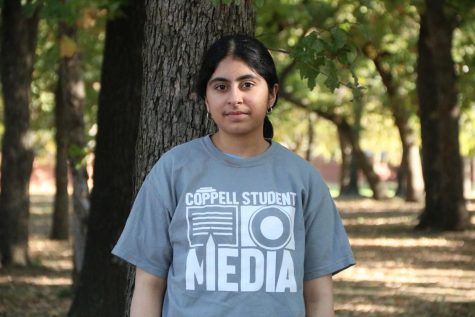A blazing revolution: Land down under inspires climatic change
As a result of extreme heat, drought and high winds, fires have raged throughout Australia since September 2018. The crisis has led to the destruction of homes, habitats and lives.
January 31, 2020
One billion animals, 20 million acres, one thousand animals and 28 people dead.
The state-wide fires in Australia, starting in September 2018, took a tragic turn at the beginning of 2020 when the yearly bushfires set the whole nation ablaze. The fire has many possible causes – such as winds and droughts – but one that stands out is the impact of climate change. Countries around the world are starting to take action to address climate change, including Coppell.
But in order to take action, it must be known what can be taken action for.
Coppell High School junior Fiona Lopez’s mother Amy Mcnamara grew up in Sydney, Australia and experienced the Australian burnoffs firsthand. Growing up with a continuous drought, moderate temperatures and braze winds was a norm for her.
“While I was growing up in Sydney, I had witnessed the burnoffs where they deliberately set the land on fire, so when they set up bush fires the land wouldn’t be as harmed,” Mrs. Mcnamara said. “The fires were a usual occurrence, an established practice, but the high temperatures and this blaze was not.”
The fires spread from New South Wales down to Victoria, until soon the entire eastern peninsula of Australia went up in flames. The temperature rose and the summer of 2019 became the nation’s hottest summer in history as average temperatures rose past 86 degrees.Yet despite the damage, Australia’s government attempts to reduce carbon emissions and implement environmental policies have been scolded by the United Nations over the years as the government fails to take affirmative action.
“The government is denying that a large aspect is climate change; they have stopped funding for environmental causes for a while,” Mcnamara said. “They are destroying the land, we as humans are destroying the land and we as humans need to take action for it.”
As awareness of the devastation has spread, humans have been taking action, especially humans in Coppell.
CHS junior Swetha Tandri is a founder of the organization Earth Protection Project, a global organization that combats three large causes of climate change: camouflage, consumerism and convenience. Her organization has been working with different people and branches of her local community.
“The organization is partnered with a fellow organization called Ecosia, a search engine that plants trees,” Tandri said. “With every $1 donated, a tree can be planted and all proceeds are going toward the Eden Reforestation Project which is working in Australia right now.”
There are also other organizations to which one can donate a small amount to aid damage to different parts of Australia.
“There is a website called wires.org, and that’s a site where you can trust to donate the money to the country; we need to be cautious of scams and this is a great way to donate,” Mcnamara said. “There is also Knit and Crafter, an organization that helps aid lost and injured animals.”
But money is not the only way to ensure climatic justice, personal action and teamwork is required as well. Doing small things such as turning off the lights when one leaves the room, wasting less water and recycling more can help. Sharing these lessons with others is also important, according to Mcnamara.
“Part of raising awareness is educating, and as a teacher that is something I incorporate into my curriculum,” CHS AP biology and environmental science teacher Gulshan Mir said. “Talking about events like these and developing projects that address environmental impacts really opens eyes. It influences students to go out there and make a change, and that is something we really need right now.”
Follow Sarah (@Sarah.hab1) and @CHSCampusNews on Twitter.











